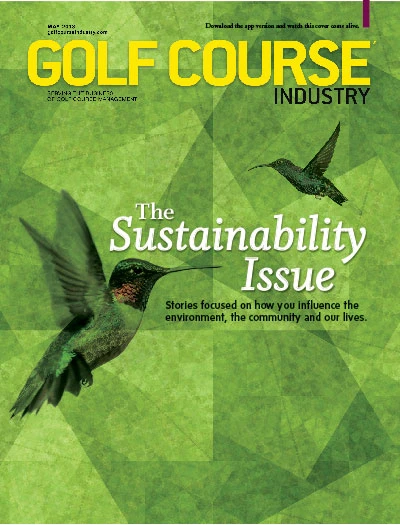 Pat Jones Pat JonesEditorial Director and Publisher |
Over the past 30 years, I’ve had a front-row seat for the environmental sea-change that’s taken place in the golf business. It’s been a long, strange trip to say the least. It all started because we were being attacked for polluting our own courses. Golf course superintendents were shocked to find themselves using poisons that “experts” claimed harmed wildlife and water and even people. Concerns came to a head in the late ‘80s when a suit was filed against a chemical manufacturer by the widow of a Navy officer who died after allegedly exposing himself to a tainted fungicide product thanks to his curious habit of putting his golf ball in his mouth between holes. Much of the criticism was unfounded crap, but some of the old-school pesticides we used in the ‘70s and ‘80s did have ugly side effects. Chlordane stayed in soils forever. Mercury and cadmium products were equally persistent, mobile and dangerous to handle. Diazinon worked great and didn’t hurt people, but EPA decided to single it out to prove it could ban a product purely because of its impact on birds and wildlife. And pesticides weren’t the only source of concern. During the various golf booms in the second half of the 20th century, developers filled a lot of wetlands and disrupted a lot of habitat to build housing with golf courses as their anchors. I’ll bet that half the courses in the Southeast that were built in the ‘50s through the mid-‘80s could never be built today because they were sited smack in the middle of sensitive, now-protected areas. At the time, we just thought they were swamps filled with critters and varmints. Turns out they were pristine wetlands and habitats filled with valuable animal and plant species. Who knew? When aging Yankees started moving to the Sun Belt, we built a ton of golf courses in the desert. We irrigated them by drilling wells into aquifers conveniently located under the sun-scorched sands. Even though it was quite literally a drop in a bucket, the perception that golf courses were siphoning millions of gallons of water a day out of underground reservoirs created another flashpoint, particularly when periodic drought restrictions hit homeowners and other businesses. The courses we built were just too damned thirsty. Recently, golf and lawn care have come under fire again for possible contributions to the dead zones that threaten the Great Lakes. And, as recently as last month, a sweeping new ban of neonicotinoid pesticides – staple tools for many turf managers – was enacted in Europe in a likely overreaction to concerns about honey bee populations. In short, there have been and always will be “environmental issues” for golf to deal with. As long as we continue to require water and plant protection to effectively present a good playing surface for the game, we will be scrutinized. But, thanks to decades of efforts by Audubon International, the USGA, the GCSAA and dozens of leading chapters around the nation, that scrutiny is nothing compared to what it could have been. The Cooperative Sanctuary Program for Golf created a groundswell of interest in doing the right thing. What other industries might have tried to solve with lobbying, regulatory dogfights and legal battles, we addressed with education, better products, improved practices and – most importantly – a commitment to ensuring that golf could be sustainable. Now, as the sanctuary program commences on a new quarter century, the landscape is very different. Economic sustainability is now as important as environmental sustainability. Happily, these two concepts go hand-in-hand. Examples include reduced water, more efficient plant protection, back-to-basics agronomy and design/landscaping practices that eliminate labor and, often, create a more interesting playing field. Oh, and along the way we’ve found a way to save and protect a few of those critters and varmints, too. It’s far too soon to declare victory in golf’s quest to be viewed as a “green” sport. As turf managers we’re still too resource intensive and our use of water will always be in question. But, it’s not too soon to say that we have evolved and changed to become far better stewards and far better businesspeople in response to some of the crises we faced 20 or 30 years ago. Many organizations deserve a large share of the credit for this pretty amazing accomplishment. But the real kudos go to you. Golf course superintendents were justifiably pissed off to be accused of being indiscriminate polluters and lackeys for rich folks who wanted perfection at any cost. That anger translated into action and real change. It was as if the profession collectively rose up and loudly stated, “Not me! I’m not going to screw up this beautiful place they pay me to manage. I’m not going to leave a black mark on the game. I’m going to do the right thing.” And you did. And that’s why golf will abide. |
Get curated news on YOUR industry.
Enter your email to receive our newsletters.
Explore the May 2013 Issue
Check out more from this issue and find your next story to read.
Latest from Golf Course Industry
- Standard Golf announces new product lineup for 2025
- The Salt Pond taps Troon for management
- KemperSports selected to manage Swansea Country Club
- From the publisher’s pen: Grab that guide
- Introducing our April 2025 issue
- South Carolina leaders honor golf course superintendent
- One and only
- Wild can be good







